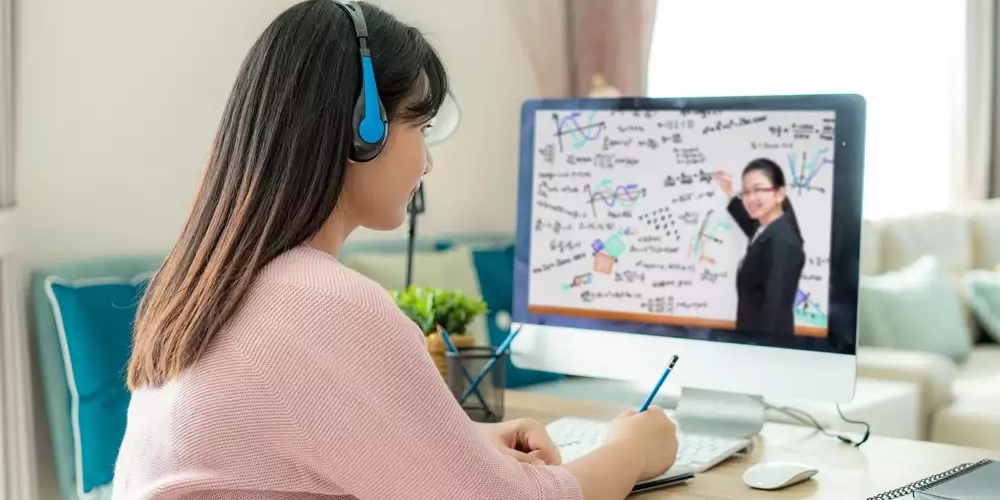Improving Academic Performance Using Engaging Video Content

With the growth of blended, flipped, and online classes, video has become an integral part of higher education. Studies consistently show that it has a positive impact on learning, leading to more motivated and engaged learners. Most educators say that video improves student performance and satisfaction, and students rate video content more highly than any other academic resource.
As video has become increasingly common in college and university classrooms, educators have sought to use it as a tool for improving academic performance. After all, the statistics speak for themselves. Generation Z prefers YouTube lessons to printed books, and almost half of internet users between the ages of sixteen and twenty-four use online video as a source of learning each week.
In this article, we look at how engaging video content helps improve academic performance.
Videos Help Students Engage More with Subjects
Integrating video content into the curriculum gives learners the tools to take charge of their learning. Video content enables them to manage their cognitive load by watching a video in segments, controlling the flow of new information by pausing, taking notes, and rewatching portions of the video. Learning outcomes and satisfaction improve when students can control the pace and move through a video.
Educators should strive to keep videos short to maximize learning outcomes. Multiple studies show that student engagement with video content increases when videos are kept short. Video platforms for education like Warpwire give educators the tools to create brief videos and organize them using tags or media libraries to enhance learning.
Media libraries house all course content in a central location, grouping it by subject, theme, or course, while tags enable educators to group similar content, making it easy for learners to find what they need quickly.
Videos Increase Student Motivation
Motivation is one of the most important factors influencing learning and achievement, making increasing learners' motivation a priority for most educators. Motivated learners are more likely to persist when faced with complex tasks and produce higher-quality results. Studies also show that motivated students have a deeper grasp of course material and perform better in classes and on standardized tests.
Learners find video content more engaging than reading a textbook and are more likely to engage with video-based course materials, contributing to increased motivation. The most effective video content includes graphics and illustrations, making it easier for students to grasp complex topics. Videos also increase the efficiency of the learning process by enabling students to assimilate course material more easily.
When students play an active role in creating course content, their motivation toward the subject increases. Educators have many options for using video to increase motivation among learners, including assigning students video assignments instead of written tasks. They can also encourage learners to interact with each other by posting their videos to the LMS, giving their peers opportunities to comment and provide feedback.
Videos Enable Students to Focus on What's Important
Learners have to juggle a large amount of information on the journey to mastering a subject, and video enables them to focus their attention on the aspects of a topic that they find most difficult. This improves learning outcomes and saves students time. Furthermore, video enables learners to deepen their understanding of a topic and learn the necessary steps to solve problems successfully.
Video is an on-the-go resource that students can watch anywhere, increasing their learning opportunities. Research shows that video aids learners' understanding of theoretical topics, especially when coupled with text-based explanations. It accomplishes this goal by giving students control of what they're learning and enabling them to master content without becoming overwhelmed.
Platforms like Warpwrite enable instructors to leverage the power of video to provide personalized video feedback to students. This type of feedback helps students identify what they're doing right and concentrate on the areas that they need to improve.
Videos Complement Text-Based learning
When paired with text-based learning, video goes a long way toward improving academic performance. Students report that information delivered via video is easier to learn and more memorable than text. Educators say that video is more effective than text-based content and engages students more than other types of context, making learners more likely to interact with course materials.
Warpwire makes it easy for institutions of higher education to integrate videos into their LMS, so students can watch videos side by side with course materials within the school's LMS. Moreover, educators can use video to encourage active learning by using prompts to encourage students to engage with video content and by interspersing questions between video clips.
Videos Consolidate Students' Learning
When video is integrated into coursework, it helps reinforce material taught in class. Video also helps learners understand and remember more clearly what they've learned, including concepts and information. Since students can access video twenty-four hours a day, they can revisit challenging material learned in class.
Video may also result in higher content retention, with some studies suggesting that our brains retain significantly more information watching videos than reading texts. All these benefits play an essential role in improving academic performance among learners.
Warpwire’s video platform provides analytics to help you track media assets, media libraries, and system-wide usage. Designed to explore engagement, Warpwire’s reports provide deep insight into how your institution interacts with media.
To see how we can help you better leverage your video content, get in touch with us today!
